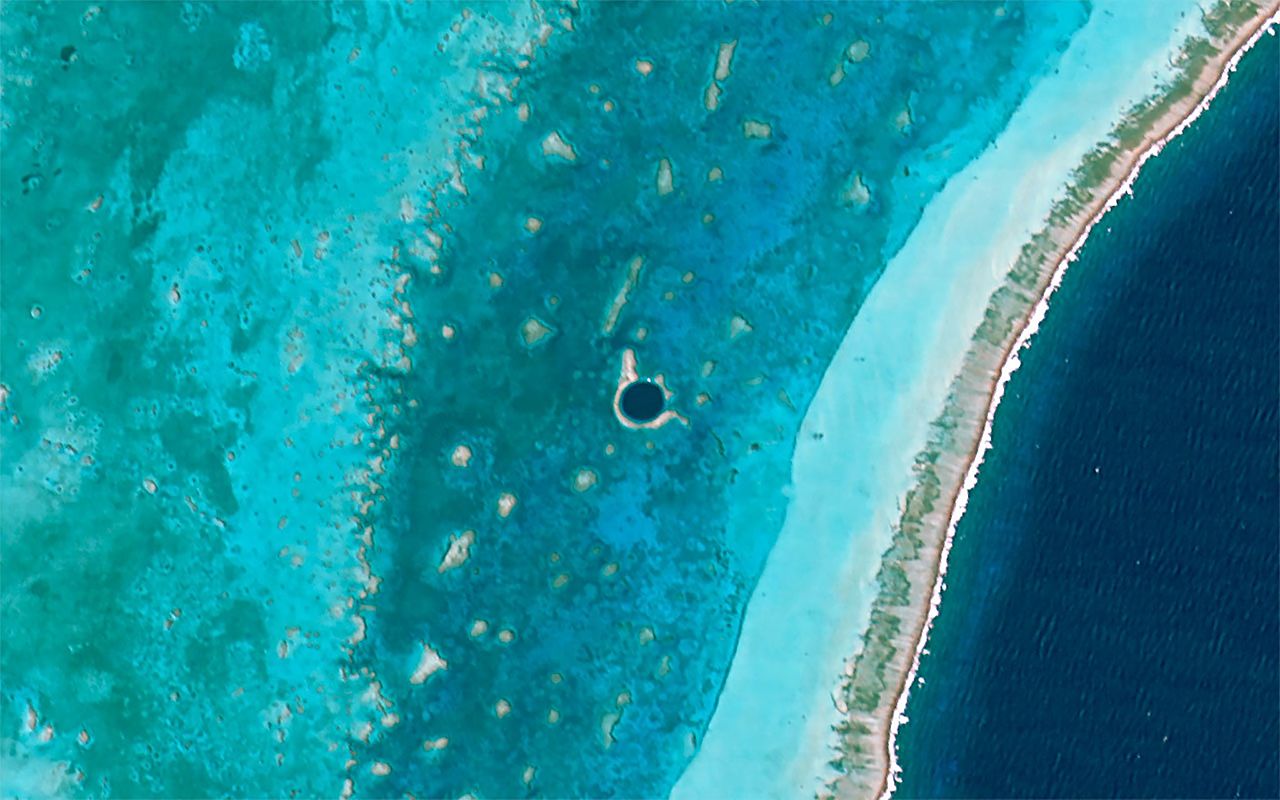A team of researchers conducted an expedition into the mysterious Great Blue Hole, a large and mesmerizing marine sinkhole in Belize. They utilized high-end submarines to reveal its secrets, but have instead stumbled across more surprises and mysteries as they revealed mystical tracks found at its bottom.
Last December, a group of scientists and explorers embarked on a journey to explore the Great Blue Hole and its secrets. There were many researchers on the team, as well as billionaire Richard Branson, and Fabien Cousteau, the grandson of French explorer Jacques Cousteau.
According to CNN Travel, Erika Bergman, chief submarine pilot on the project and oceanographer said that they discovered mysterious tracks at the bottom of the sinkhole. They couldn’t identify the source of those tracks saying they remain “open to interpretation.”
The mysterious Great Blue Hole lies near the center of Lighthouse Reef, 43 miles away from the coast and Belize City. The hole measures 1,043 feet in diameter and is 407 feet deep. Based on the analysis of stalactites inside, scientists found that the formation process of the cavern took place between 153,000 and 15,000 years ago.
Scientists believe that the tracks found at the bottom of the hole are likely not caused by any living creature in recent times, considering that the sinkhole’s bed is vacant of oxygen. Scientists said that the dissolved oxygen levels go down to zero below the layer of hydrogen sulfide which can be found at 300 feet deep into the hole. In that way, the water is prevented from circulating due to a thick cloak. The depths of the mysterious Great Blue Hole are also not habitable. The seafloor of the hole is surrounded by dead marine animals that accidentally or purposely ventured too deep, unable to survive.
That said, it’s safe to assume that the tracks found at the bottom of the hole are part of the geological process, as the Great Blue Hole geologically began as a cavern 14,000 years ago. After the last ice age came to an end, the ice melted and sea levels raised drastically. That caused the cave ceiling to collapse and become flooded by water.
Scientists discovered various minerals beneath the surface, including stalagmites, stalactites and other geological features that can be found inside a cave. Nevertheless, the geological age of the hole caused the materials to become etched into the marine growth.
“It’s neat that there are spaces on our planet – and most of them in the oceans – that are exactly the way they were thousands of years ago and will remain exactly the way they are thousands of years in the future,” Bergman added, speaking to CNN.
The geological development of the sinkhole just proves how diverse our planet is, and how many mysterious spaces wait to be discovered. Although the Great Blue Hole doesn’t host the tracks of some colossal creatures that hide inside, similar to those in Pacific Rim movies, it still sparks curiosity.





